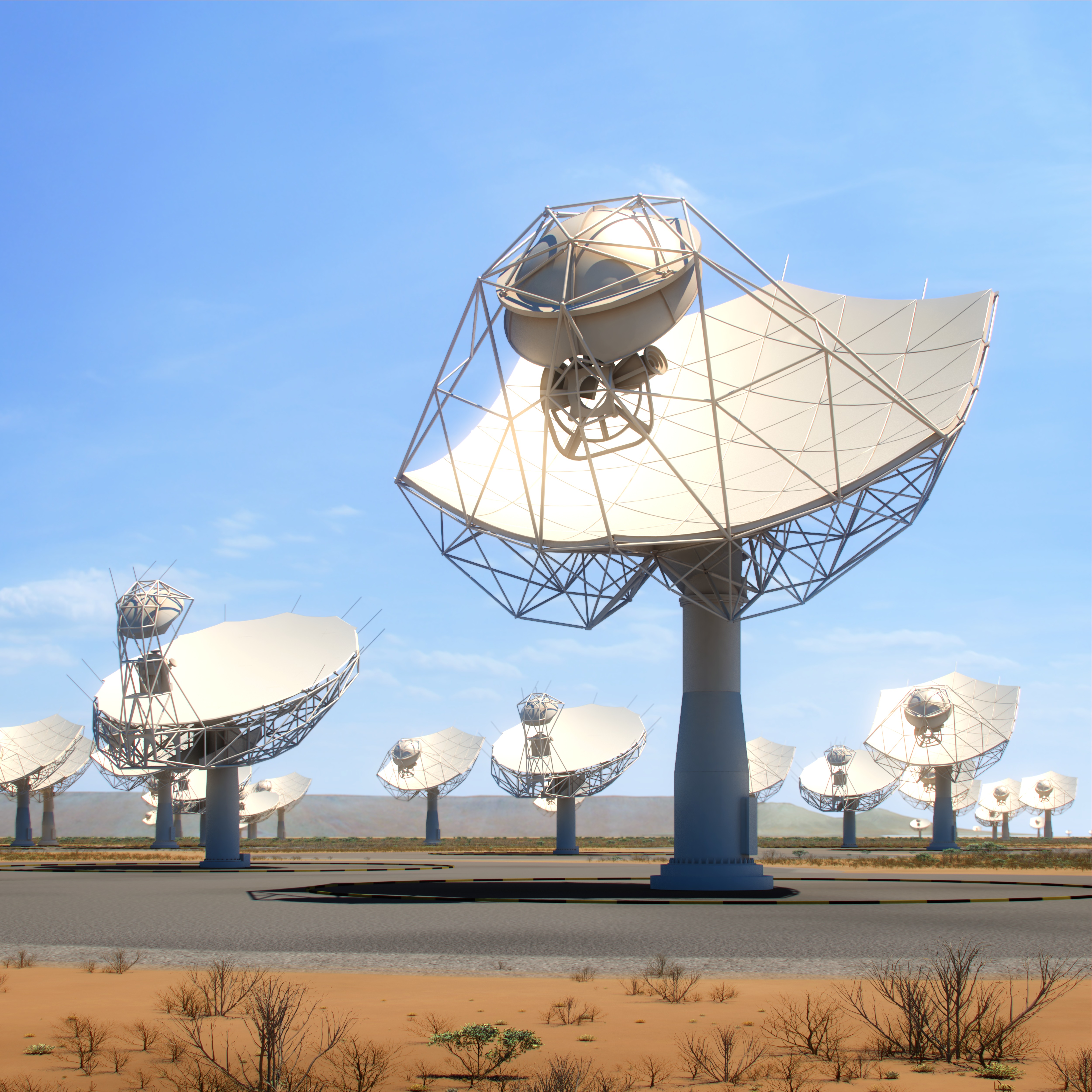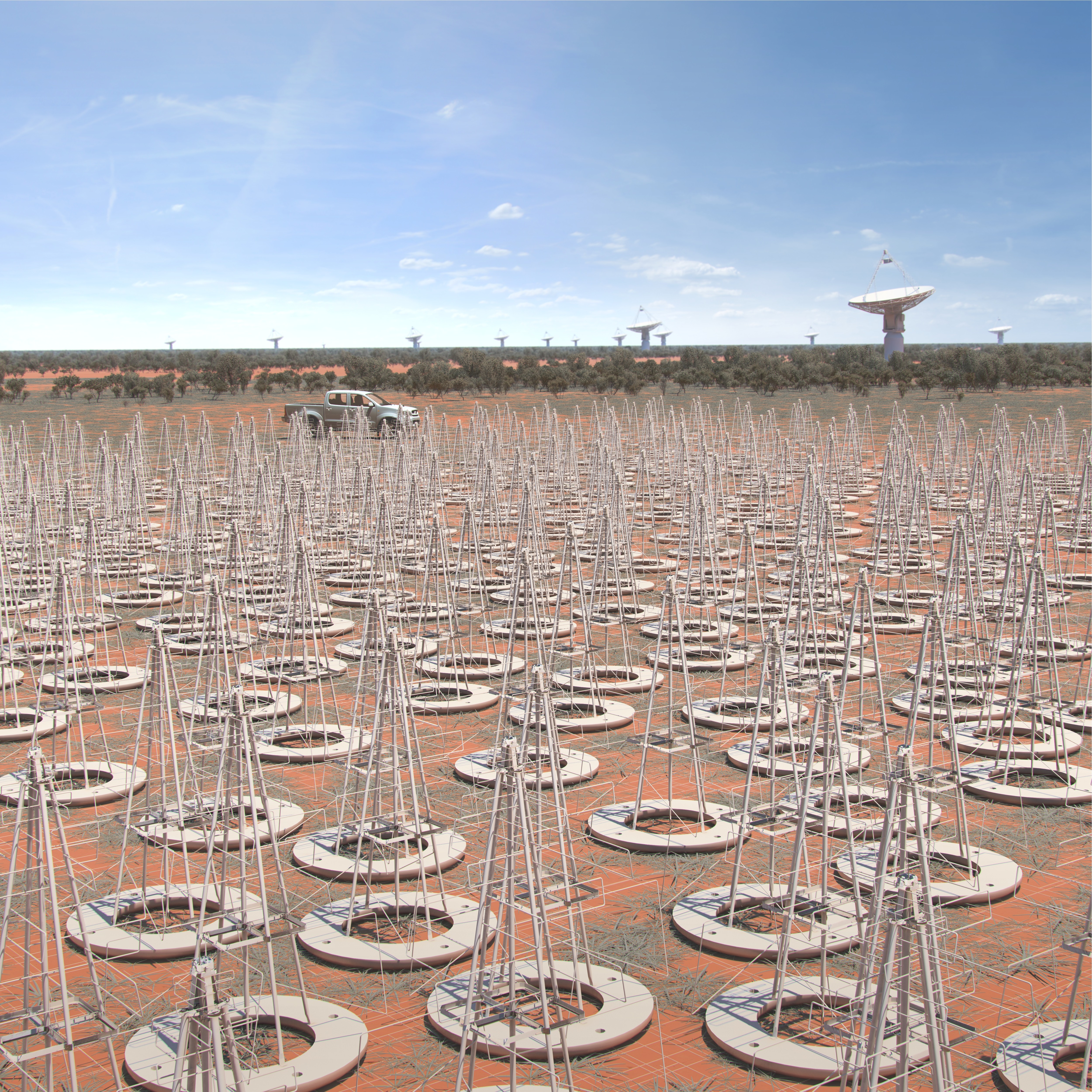When
we do astronomy, whether it is in our back garden at night, or using the Hubble
Space Telescope in orbit around the Earth, bigger is always better. The bigger our telescope (lens or mirror), the more light we can collect and the deeper into the universe we can see. So how big can we build our telescopes? Well, at present, there are some enormous optical telescopes planned, such as the Thirty Metre Telescope or the Extremely Large Telescope of sizes 30-40m across.
Imagine though, if we could build telescopes across countries, how big could we make them? This is what the Square Kilometre Array (SKA) sets out to do. Astronomers can cheat a little bit here in avoiding making one supersized telescope, by joining many smaller telescopes together to mimic a larger one. This is really hard to do for an optical telescope but it gets easier if we consider building radio telescopes. The SKA will consist of thousands of small radio telescopes sprawled across the deserts in two continents; half deployed in the Karoo desert of South Africa and the other half in the Murchison in Western Australia. In fact, altogether the SKA will comprise of hundreds of traditional radio dishes and more than 100,000 small (TV like) antennas, creating an effective telescope area of a kilometre in size!
The SKA will be the largest scientific facility in the history of human kind. It will be a super sensitive telescope, probing our universe back to its earliest times when it was mainly full of hydrogen gas just before the very first stars turned on.
The SKA is a multinational, worldwide project and although the telescopes themselves are found in Africa and Australia, the headquarters is located in the UK at the famous UNESCO heritage site at Jodrell Bank near Manchester. Managing such a large, global collaboration requires an organisation on the scale of nations. It is not just about building the telescopes, but also the infrastructure required (not only scientific but also civil), the communications and negotiations necessary and then of course the computing power to process the vast amounts of data expected from the SKA.
To deal with all this, the SKA now has its own inter-governmental organisation, like a mini-United Nations, referred to as the SKA Observatory Council. The SKA Observatory Council is composed of the SKA member states and other countries intending to join to the project. The SKA Observatory Convention was agreed in May 2018 and signed in Rome on 12th March 2019 by seven initial members. On the 16th December 2020, the UK became the sixth member state to ratify the SKA convention after Portugal, Netherlands, Italy South Africa and Australia. The SKA Observatory finally entered into force (became a legal entity) on 15th January 2021, marking the birth of the SKA telescope.
The first official meeting of the new SKA Council took place on 3rd-4th February 2021, celebrating the birthday of the SKA. Now all we have to do is go and build the telescope!
The SKA is now entering its construction phase, expected to take 7-8 years, with its various member and supporting nations bidding for a wide range of contracts including both the hardware and the extensive software that will be required to operate the SKA. RAL Space has a dedicated SKA team (as part of the larger UK consortium) working on what we call the "Science Data Processor" component of the SKA that will control the flow of the data and its analysis throughout the SKA system.
We expect the SKA to be operational by the end of the decade. It will be a driver of technological and scientific computing development across the world and will completely transform our understanding of the radio universe.
The RAL Space SKA team are: Chris Pearson, Nijin Thykkathu, Brian McIlwrath, Steve Guest, Gabriella Hodosan, Andrew Mcdermott.


Image credits: SKA Organisation
Left: This artist's rendition of the SKA-mid dishes in Africa shows how they may eventually look when completed. The 15m wide dish telescopes, will provide the SKA with some of its highest resolution imaging capability, working towards the upper range of radio frequencies which the SKA will cover.
Right: Close up artist rendition. Image of the Australian SKA LFAA (Low Frequency Aperture Array) instrument. These dipole antenna which will number in their hundreds of thousands will survey the radio sky in frequencies as low at 50Mhz.
